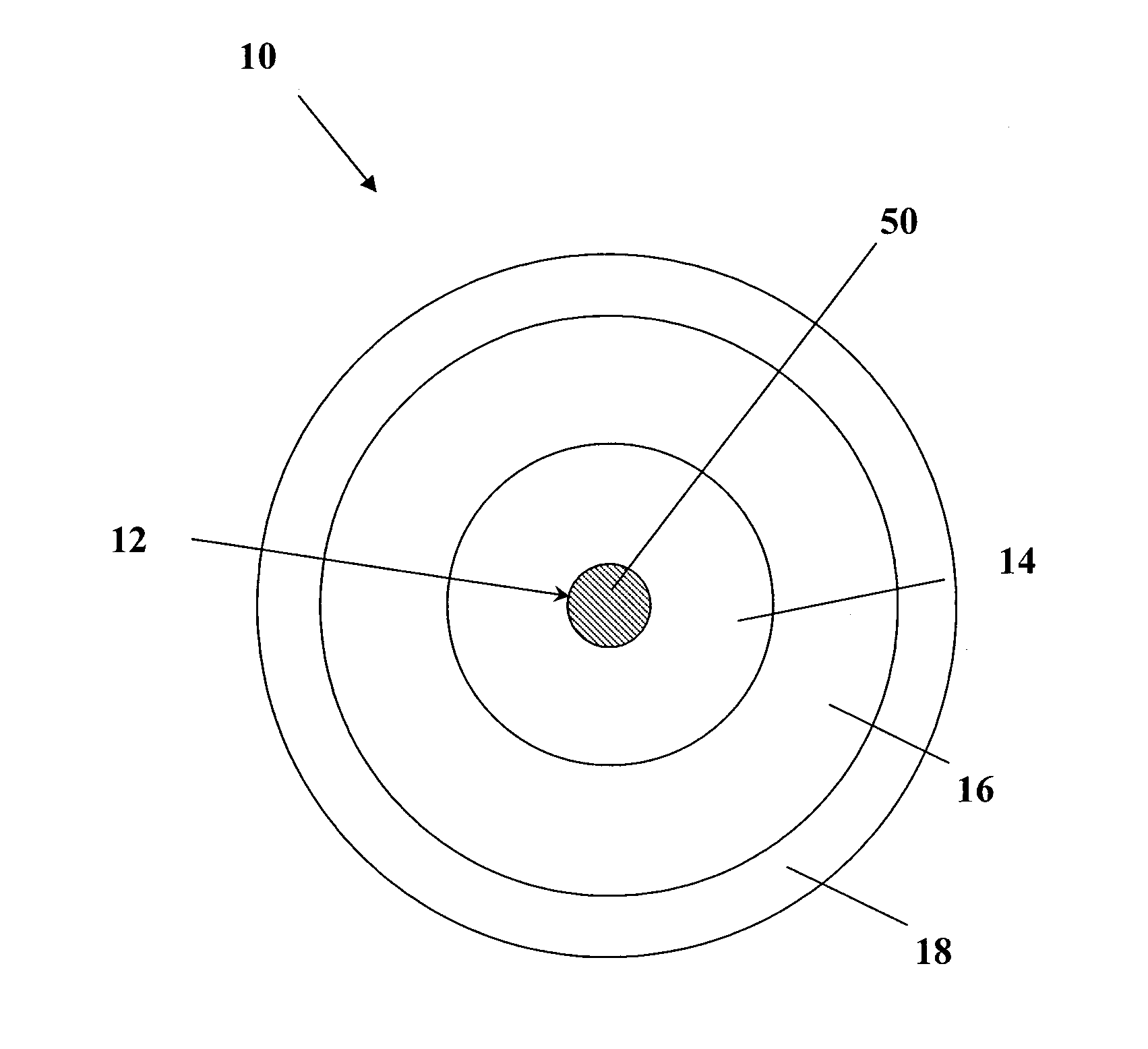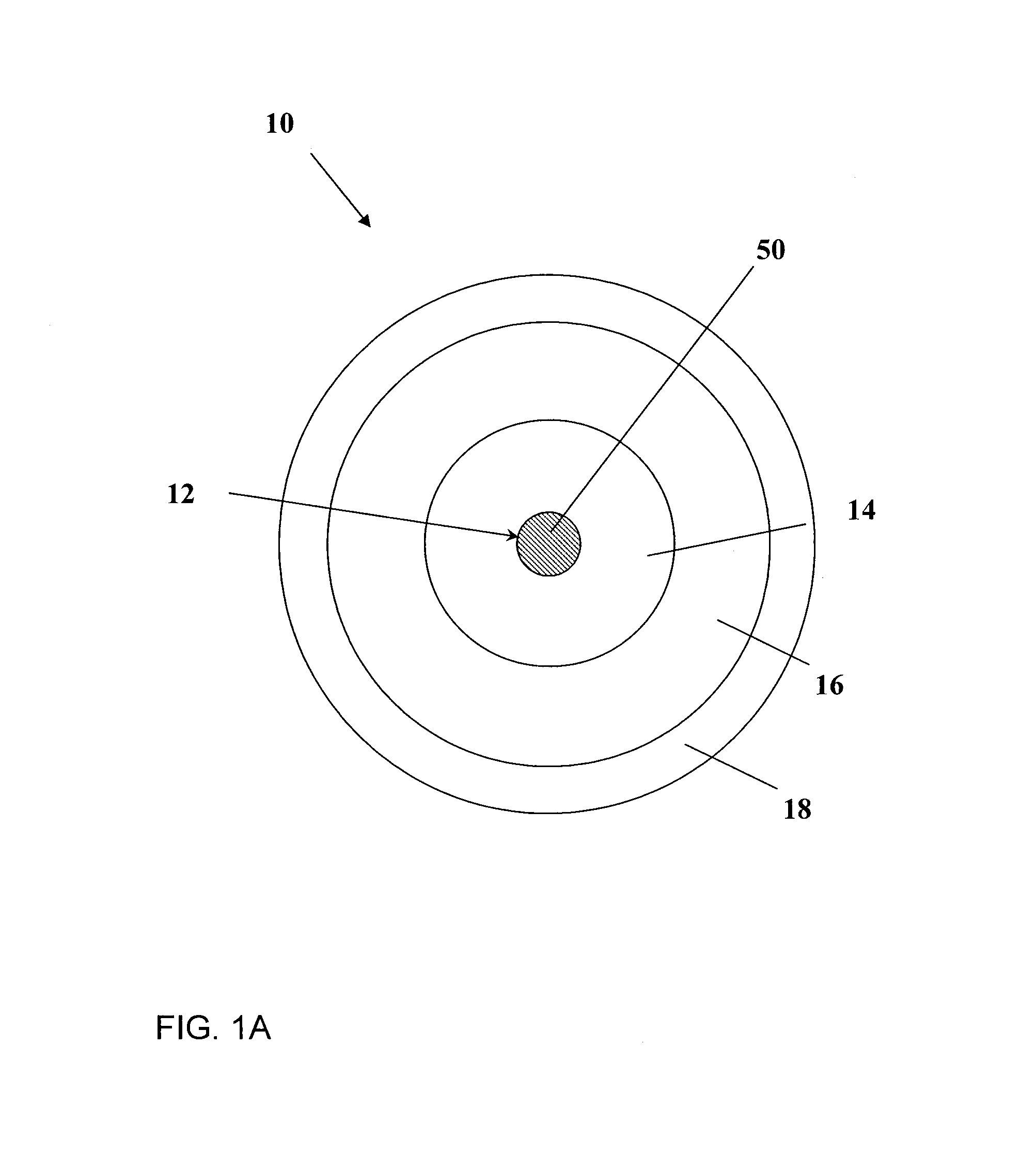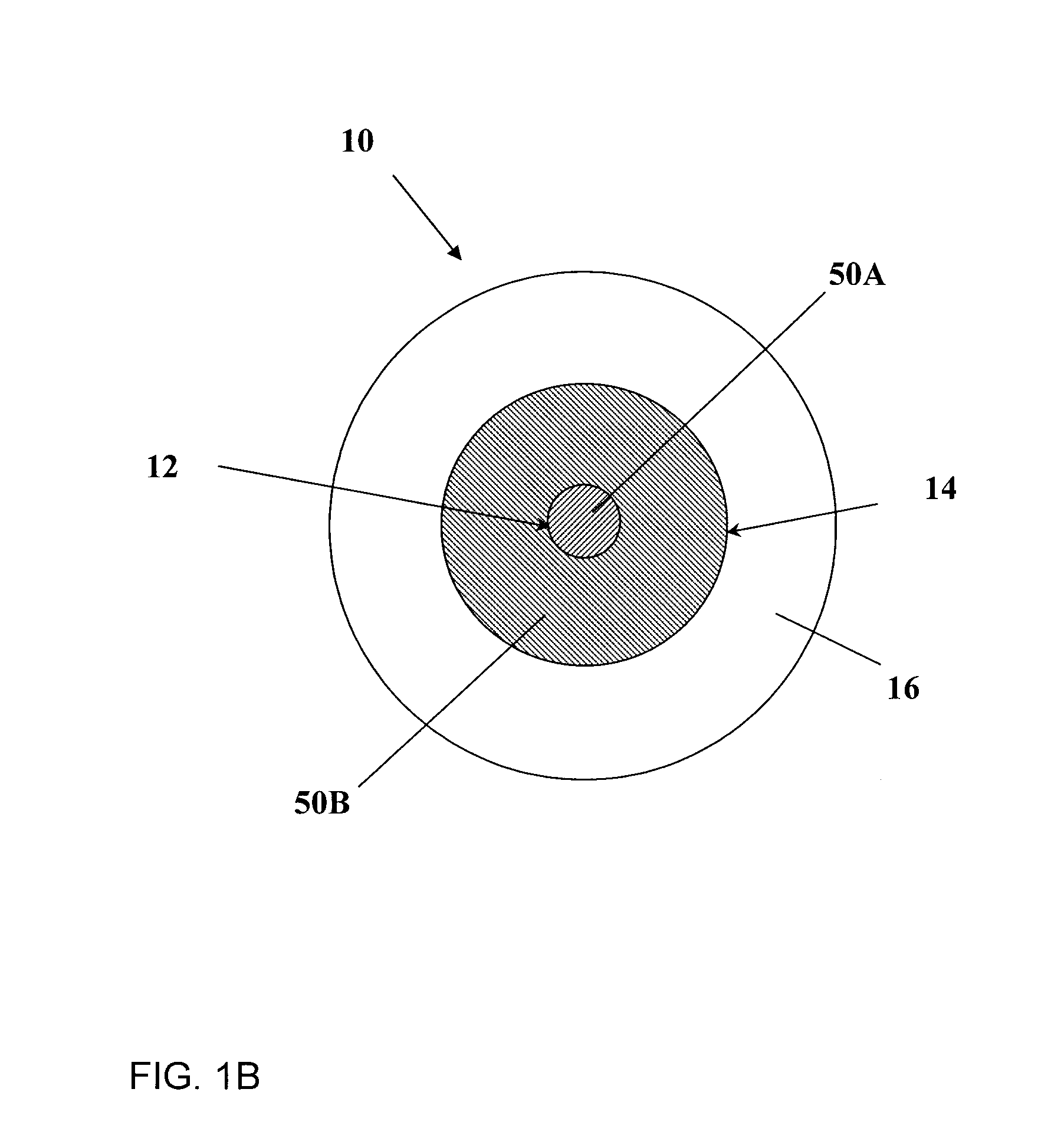Light emitting devices with phosphosilicate glass
a light-emitting device and phosphosilicate glass technology, applied in the direction of lasers, instruments, active medium materials, etc., can solve the problems of pulse deformation, limit the amount of energy that may be extracted, create non-linear effects, etc., and achieve the effect of reducing the photodarkening
- Summary
- Abstract
- Description
- Claims
- Application Information
AI Technical Summary
Benefits of technology
Problems solved by technology
Method used
Image
Examples
Embodiment Construction
[0041]The present invention will be described more fully hereinafter with reference to the accompanying drawings, FIGS. 1A to 9C, in which like numerals refer to like elements throughout.
[0042]In the following description, the term “light” is used to refer to all electromagnetic radiation, including but not limited to visible light. Furthermore, the term “optical” is used to qualify all electromagnetic radiation, that is to say light in the visible spectrum and light in other wavelength (λ) ranges.
[0043]According to one aspect, the invention provides a light-emitting device which includes a gain medium that includes an optically active phosphosilicate glass, the phosphosilicate glass having at least one active ion dopant and from about 1 to 30 mol % of phosphorus oxide.
[0044]The light-emitting device may emit light and alternatively or additionally it may amplify light. Although the light-emitting device is preferably embodied by an amplifier or a pulsed amplifier, it may be embodie...
PUM
 Login to View More
Login to View More Abstract
Description
Claims
Application Information
 Login to View More
Login to View More - R&D
- Intellectual Property
- Life Sciences
- Materials
- Tech Scout
- Unparalleled Data Quality
- Higher Quality Content
- 60% Fewer Hallucinations
Browse by: Latest US Patents, China's latest patents, Technical Efficacy Thesaurus, Application Domain, Technology Topic, Popular Technical Reports.
© 2025 PatSnap. All rights reserved.Legal|Privacy policy|Modern Slavery Act Transparency Statement|Sitemap|About US| Contact US: help@patsnap.com



